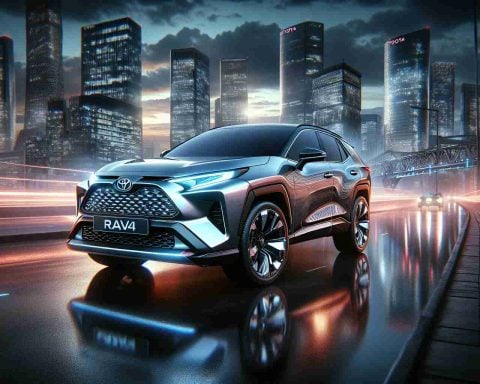Tesla’s Model Y is evolving beyond the standard narrative of electric mobility, as innovators explore its potential to revolutionize power grid stabilization. This compact SUV isn’t just paving the way with environmental benefits—it’s starting to play an unexpected role in the global shift towards decentralized energy solutions.
As electric vehicles (EVs) become more integrated into daily life, researchers and engineers are investigating how these mobile energy units can support larger goals of energy efficiency. The Model Y, with its substantial battery capacity, is at the forefront of these discussions. By leveraging vehicle-to-grid (V2G) technology, owners can potentially feed electricity back into the power grid during peak demand periods, thus enhancing grid stability and reducing the reliance on fossil fuels.
What’s groundbreaking is the prospect of using Model Y’s widespread adoption to support localized energy networks. Particularly in markets with an unreliable grid, the Model Y could serve as both a personal vehicle and a mobile energy provider, allowing owners to contribute to cleaner and more resilient energy systems.
Furthermore, the integration of AI and smart technology in the Model Y could soon automate these energy transactions. This potential convergence of electric mobility and smart grids marks a pivotal step toward sustainable urban environments, where vehicles like the Tesla Model Y might do more than transport—they’ll be active participants in shaping a more sustainable future.
Beyond Transportation: Tesla Model Y’s Role in Energy Revolution
Tesla’s Model Y is not just redefining electric mobility; it’s paving the way for groundbreaking applications in power grid stabilization. As the world continues to embrace electric vehicles (EVs), the Model Y stands out as a critical player in transforming energy landscapes. Here’s a deeper dive into the prospects and innovations surrounding Tesla Model Y that were not included in the standard narrative.
Features and Specifications
The Tesla Model Y boasts a robust battery capacity that makes it an ideal candidate for vehicle-to-grid (V2G) technology. With its long-range capabilities and efficient energy consumption, the Model Y offers a substantial power reserve that could be tapped into for grid support. Tesla’s commitment to constant software updates ensures that the Model Y remains at the forefront of innovation, enhancing its functionality over time.
Innovations and AI Integration
One of the most innovative aspects of the Model Y is its integration with AI and smart technologies. These intelligent features have the potential to automate energy transactions, allowing for seamless interaction between the vehicle and power grids. This innovation can lead to smart energy systems where vehicles like the Model Y automatically participate in stabilizing energy supply demands.
Use Cases in Decentralized Energy Solutions
Beyond personal transportation, the Model Y is being explored as a mobile energy provider, particularly in areas with unreliable grid systems. Its ability to feed electricity back into the grid during peak demand periods can help decrease dependency on fossil fuels and support the shift towards greener energy solutions. As more people adopt the Model Y, localized energy networks can evolve, turning everyday vehicles into key assets in energy distribution.
Market Insights and Predictions
The growing interest in V2G technology, combined with the widespread adoption of Model Y, highlights a significant trend in the automotive and energy sectors. As energy efficiency becomes paramount, Tesla Model Y’s potential in supporting decentralized energy networks could spark industry-wide shifts. Experts predict that such innovations may soon redefine electric vehicle markets, influencing both consumer choices and energy policies.
Sustainability Impacts
Emphasizing sustainability, the Model Y contributes to more than just reducing emissions. Its application in grid stabilization and energy sharing showcases a multifaceted impact on urban environments. By enabling cleaner and more reliable power systems, the Model Y is more than just a car; it’s a step towards sustainable urban development.
Security and Compatibility Aspects
While V2G offers promising benefits, security remains a concern. Tesla is likely to address these with robust cybersecurity measures, ensuring that the Model Y’s integration with power grids is safe and secure. Additionally, compatibility with existing grid infrastructures will be crucial in realizing the full potential of this technology.
For more insights into Tesla’s innovations in electric vehicles and energy solutions, visit the official Tesla website at Tesla.
As the narrative around Tesla’s Model Y continues to evolve, it’s clear that this vehicle’s role extends far beyond transportation. Through advanced technology and strategic energy applications, the Model Y is set to play a vital role in shaping a sustainable future.













